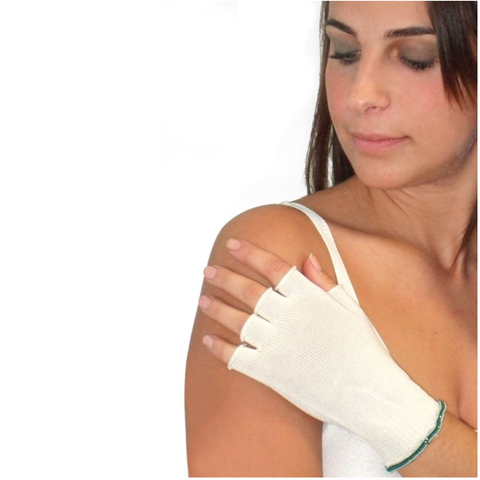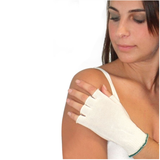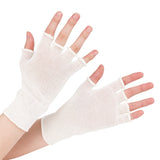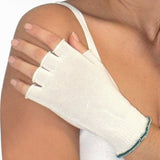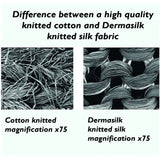DermaSilk Therapeutic Fingerless Gloves for Adults VAT Free
Clinically Proven to Reduce Itching
- Class 1 Medical Device
- helps heal hand eczema and dermatitis
- as effective as corticosteroids in clinical trials*
- lightweight, cool and comfortable
- reduces itching
- calms and soothes irritated skin leaves fingers free
- can be used with other treatments
- recommended by dermatologists, allergy specialists and nursing staff
- 98% pure silk, 2% Lycra with Microbe Shield™
- hand wash, dry flat
DermaSilk® Therapeutic Gloves are knitted from undyed medical grade pure silk bonded with an antimicrobial "shield" that has been used in hospitals for over 20 years on medical gowns and textiles for infection control. This Microbe Shield™ inhibits the growth of fungus and bacteria without releasing chemicals onto the skin and remains bonded to the silk even when washed.
The result is a gentle stretchy glove with a comfortable fit that promotes the healing of hand eczema or dermatitis whilst leaving the fingers free.
